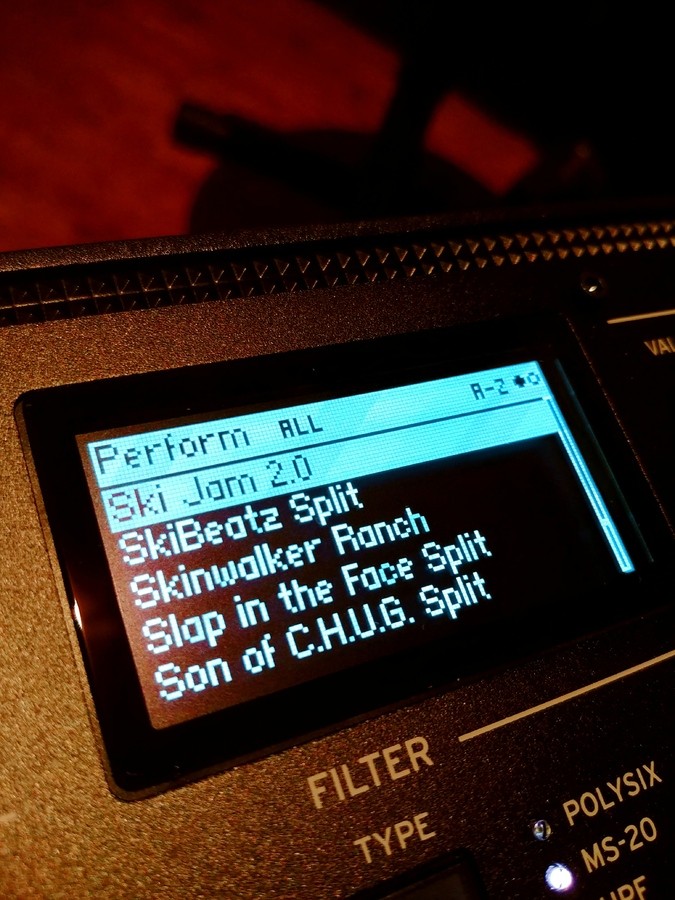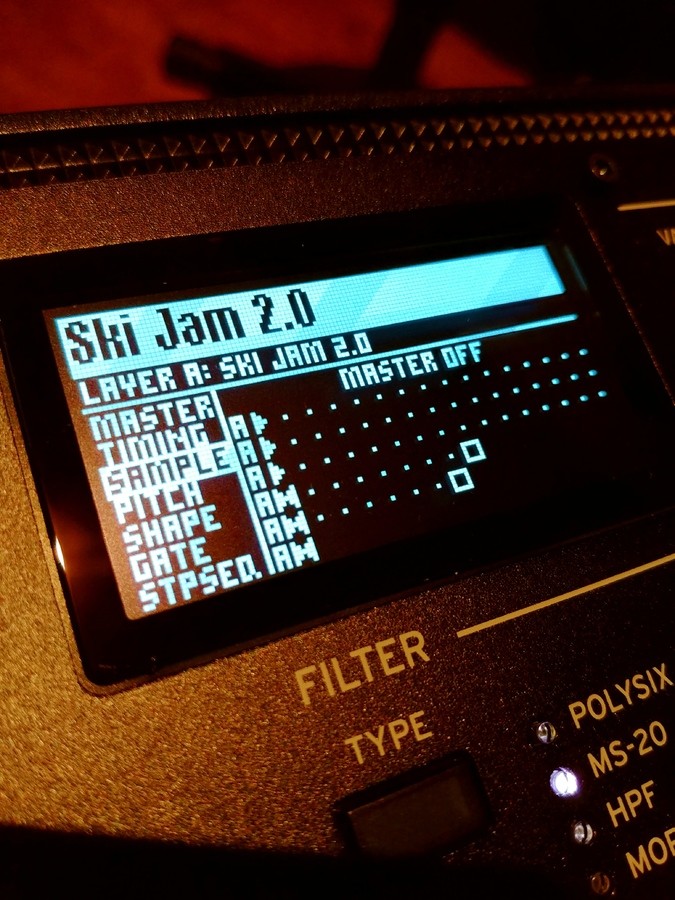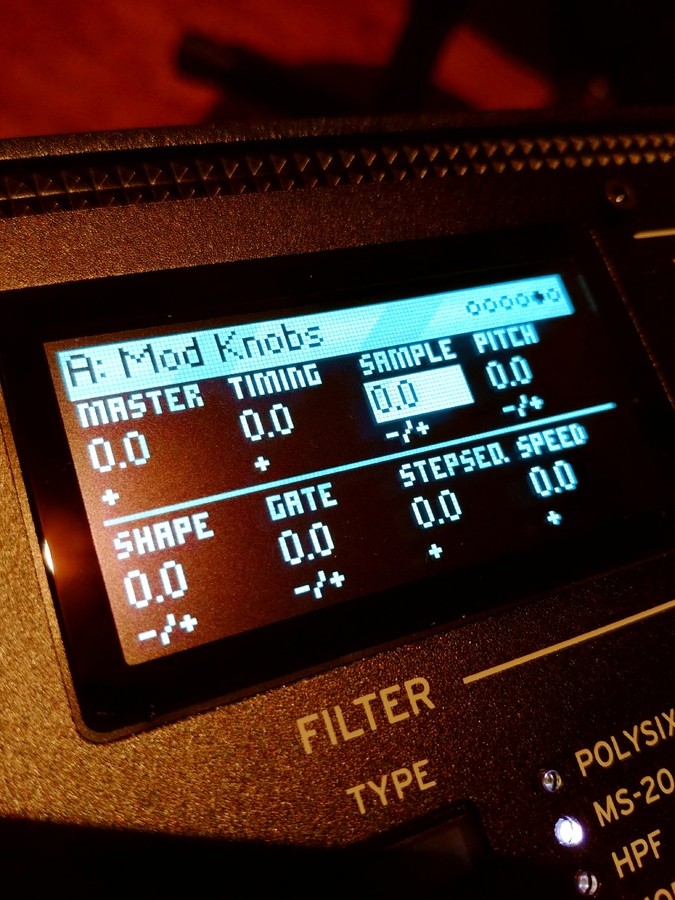Commentaires sur le test : Test du synthétiseur Korg Wavestate
- 956 réponses
- 101 participants
- 98 669 vues
- 105 followers
synthwalker
Lire l'article
Ce thread a été créé automatiquement suite à la publication d'un article. N'hésitez pas à poster vos commentaires ici !
Salomon007
Merci titipol de ta remarque, "très lisible et contrasté"
J'espère que vous ferez des photos que je lui montre.
titipol



[ Dernière édition du message le 11/09/2020 à 22:23:08 ]
Salomon007
Merci titipol
Fred
iktomi
Salomon007
[ Dernière édition du message le 11/09/2020 à 22:41:45 ]
dédé la joncaille
Non j'ai 56 et des yeux de taupe
Il est très lisible et contrasté !
Absolument, moi j'en ai 52 (y a qu'des vieux ici on dirait
Ce serait étonnant que le contraste/luminosité ne soit pas réglable, ils le sont quasi tous depuis des lustres.
La luminosité est réglable (-> UTILITY) sur une échelle de 0 à 100.
[ Dernière édition du message le 12/09/2020 à 09:46:39 ]
iktomi
titipol
J'espere seulement que les touches, < , > et Enter tiendront dans le temps
Le Mode Randomize est sympa,
que se soit en Perf's ou Layer etc...la selection des programmes et waves pour les Layers me parait un peu ( lourdes ) et a amélioré a mon humble
avis, mais je ne l'ai pas encore vraiment en main !
Merci Korg
L' import de sample serait un plus, pour des samples perso ( pour moi mes samples EMU ) mais il est déjà pas mal fourni et assez complet .
Hate de trouver des sons ici ou la ou des banks pour explorer toutes ses possibilitées !
Désolé pour les photos pas vu auusi énorme !
[ Dernière édition du message le 15/09/2020 à 14:47:35 ]
Anonyme
Reçu hier, j'ai tout de suite adoré !
L'aspect 'dynamique' de l'interface echange du statisme du Wavestation : des diodes partout, un écran qui indique les steps des séquences en cours...
La qualité des wavesequences et des ondes utilisées est très bonne.
Certes le temps de démarrage et d'extinction sont un peu long...mais très acceptable quand même.
J'espère que l'encodeur est de qualité...celui de mon wavestation ne m'a jamais fait défaut : on peut en attendre la même chose ici.
Et puis le WaveSequence V2.0...quel net progrès !
Avez-vous fait le parallèle entre le pattern "Return to Goa 94" et le song TGV Kilomix 98 sous Rebirth ?
Bref, ça promet de bonnes heures de programmation tout ça !
Félicitation pour ce produit .
Gauthier
titipol
iktomi
titipol
iktomi
Mais super outil le WS. (et écran ultra contrasté et clair)
Et je comprends les gens surpris par son aspect, il pèse rien compte tenu de sa taille. Quand je soupèse les deux cote-à-cote, il semble plus léger que le minilogue XD version module.
Du coup j'me dis que Korg fera pas un WS module, car il sera tellement léger que les gens vont penser que c'est un factice d'expo.
[ Dernière édition du message le 18/09/2020 à 18:23:18 ]
dpuppet
J'ai fait une console retro avec un raspberry pi, qui n'ai pas plus grande qu'un paquet de clope, et pèse quelques grammes. C'est un mini pc pas très puissant fasse au pc actuel, mais quand on le spécialise pour une fonction précise ça fait d'excellentes machines.

titipol
Les boutons enter, fleches et ceux qui sont les plus sollicité m'inquiète un peu sur leur état dans deux ou trois ans..
Verrons bien !
D'ici la y aura Peut être une version 61ou 73 en tole ou un Module .
[ Dernière édition du message le 18/09/2020 à 19:17:33 ]
iktomi
Pour les boutons, perso je fais le pari qu'ils ne sont pas pire que ceux du TR, qui n'ont chez moi pas bougé 15 ans après, à part un où il faut appuyer un peu plus fort... (bon je fais pas de scène et n'en ai eu qu'un usage assez modéré)
Anonyme
alex.d.
Pour les boutons, là aussi ça se change le jour où ça casse. C'est du standard.
.: Odon Quelconque :.
Et pour les fanas de la programmation, tout le projet logiciel est en libre accès !!!
Non, ce sont uniquement les paquets soumis à licence GPL dixit les spécialistes.
https://fr.audiofanzine.com/synthe-numerique/korg/wavestate/forums/t.705054,le-logiciel-du-wavestate-en-open-source.html
« What is full of redundancy or formula is predictably boring. What is free of all structure or discipline is randomly boring. In between lies art. » (Wendy Carlos)
kosmix
Vivement que tu reçoives la TR8S, poum-tchak-poum-tchac etc
Putain Walter mais qu'est-ce que le Vietnam vient foutre là-dedans ?
iktomi
Mais c'est fou, c'était sensé être le truc qui devait arriver en premier ou presque, et au train où ça va, même le Solar 50 va arriver avant. (bon peut-être pas l'Osmose
kosmix
Putain Walter mais qu'est-ce que le Vietnam vient foutre là-dedans ?
titipol
Je n'ai plus trop utilisé d'ordi les derniers temps, ( pour la Zic )
Mais je suis assez intéressé par Reason 10 L, fourni avec le Wavestate.
Alors la question bête, peut on telecharger le soft disons ce midi au taf, et l' installer sur un autre ordi ce soir ou il est impératif de les télécharger sur l'ordi de destination avec connexion requise ?
iktomi
C'est plutôt quand tu dois passer par un système propriétaire en ligne qui gère l'installation à ta place qui requiert d'être lancé sur l'ordi "cible".
[ Dernière édition du message le 22/09/2020 à 08:35:19 ]
titipol
- < Liste des sujets
- Charte

